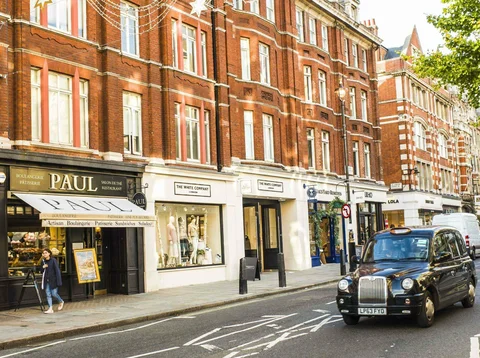Clients of buying agency Property Vision are now being offered advice on how to make their houses sustainable—reducing running costs and shoring up values in a carbon-free future, explains senior partner Philip Harvey.
Three years ago, I was asked to speak at a family office conference about the effects of Environment, Social and Governance (ESG) in residential property markets; I didn’t have much to say. At the time, house buyers, as ever, were looking for properties to fall in love with and thinking more about practical and value-enhancing projects than green solutions. Investors were simply focused on returns. Today, the landscape is somewhat different. We have clients rewilding their land, introducing regenerative farming, building new houses in open countryside, refurbishing to strict Passivhaus standards and researching esoteric sustainable solutions, such as cob houses.
We all know there are solid environmental (and health) reasons why carbon emissions need addressing; many of us are motivated to act because we worry about the future of our children and grandchildren. There is a clear shift in mentality, but how many people are doing something about it?
Since Property Vision started advising buyers in 1983, a typical country-house requirement has been for a classic Georgian old rectory surrounded by its own land. Under the Green spotlight, old buildings are considered sustainable from an embodied- carbon perspective (they already exist) but are operationally inefficient. Herein lies a problem: such buildings are protected by legislation to preserve our architectural heritage, yet a study published by the Spatial Economics Research Centre estimated that preservation policies cost residents an additional £3.8 billion and led to around 20.1 million more tonnes of greenhouse-gas emissions over an eight-year period.
Governments are going to have to bring about change by a combination of stick and carrot. Subsidies to incentivise Green energy initiatives are unlikely to be widespread for higher value properties, especially when trying to recoup the costs of the pandemic. Penalising carbon-polluting houses must be on the cards. So, is avoiding the issue of sustainability in old houses going to have a negative effect on their value and desirability?
We have already noticed a change in sentiment: the new wave of country dwellers asks more questions about the wisdom of buying historic houses. But beautiful old homes are not only bought with the head, they are also bought with the heart. We forgive them their foibles, constant maintenance and expensive running costs because they enhance our lives. It’s unlikely that they are going to struggle to sell anytime soon.
"It’s unlikely beautiful old homes will struggle to sell anytime soon"
There is also good news for old houses: the technology already exists to mitigate their impact significantly, or in many cases completely decarbonise them. We are still in the early-adoption phase, but a bit like electric cars (first on the production line in 1884), the basic solutions have been around a lot longer than one might think. Air-source heat pumps were invented in 1856, geothermal in 1948 and electricity producing solar panels in 1954 (although water-heating panels have been around since 1896).
Greening a property is not a cheap exercise. Refurbishment costs are on average 15% higher than traditional methods, but sustainable interventions will reduce running costs, usually with a payback time of less than 12 years and can also be value-enhancing. More than ever before, we are seeing premiums paid for plug-and-play homes. As regulations tighten, we will see many more buyers preferring to pay to avoid the disruption and the uncertain expense of carrying out Green upgrades themselves.
As a business, Property Vision has always focused on one thing: finding and acquiring property that best suits our clients’ needs, be that for lifestyle or investment purposes. As a part of this process, we assess every property for threats to future value. This process now involves an audit to understand the opportunities for carbon mitigation. We’ve always introduced clients to the best suppliers, such as architects, land agents, interior designers and construction companies who can help them with post-purchase projects. This list now includes specialists in Green technologies.
Given that 80% of all built structures on the planet in 2050 already exist today, there is no avoiding the need to decarbonise old houses. What is becoming increasingly clear is that there are no silver bullets, no single element fixes. A holistic approach needs to be taken that properly assesses old houses and the land surrounding them, then produces a plan that reduces and finally eliminates the need for operational carbon.
A change of ownership is a great time to carry out building works and our aim is to empower clients, helping them access the knowledge and know-how to prepare their homes for a greener future.
GREENING HOMES: THE FACTS
- UK carbon targets suggest 80% decarbonisation of private owner occupied buildings
- The Greenest houses are those already built, but old buildings generate significantly more emissions than new ones
- Buildings and construction contribute about 40% of global CO2 emissions
- Think ‘fabric first’ - improve thermal efficiency before specifying a new heat source
- Financial benefits - green upgrades reduce running costs and enhance capital values





